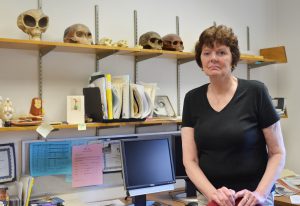In 1976, two 9,000 year old skeletons were unearthed during an excavation at the University of California, San Diego. The Kumeyaay Cultural Repatriation Committee, which represents 12 different tribes in California, filed suit for the repatriation of the skeletons in 2006, to which the University agreed. However, three scientists interested in studying the remains sued the University to block their return. A district court dismissed their claim, finding that the tribes were a necessary part of the suit but were protected by sovereign immunity, a decision upheld in the 9th circuit court of appeals. The Supreme Court declined to hear the case in 2016, ending the dispute in the University and Kumeyaay’s favor (Zimmer 2016, San Diego Union-Tribune 2012).

While the case’s outcome is positive from a repatriation perspective, its coverage across various news sources reveals powerful opposing viewpoints and often highly biased or dismissive attitudes towards repatriation claims. In 2014, the Indian Country Media Network announced a “court victory” for Kumeyaay tribes but warned that “the battle may be far from over as the plaintiffs plan to appeal.” However, more mainstream news sources took decidedly different tones. The New York Times titled an article covering the cases conclusion, “Tribes’ Win in Fight for La Jolla Bones Clouds Hopes for DNA Studies,” while an earlier headline associated with the American Association for the Advancement of Science reads, “Ancient American Skeletons Safe From Reburial, But Only for the Moment” (Zimmer 2016, Gibbons 2012). The same article refers to repatriation as “handing over 9000-year-old human bones to Native Americans” (Gibbons 2012). This kind of coverage reflects the opinions of the plaintiffs, who felt that repatriating the remains would constitute “a tremendous loss for science” (Zimmer 2016). More extremely, researcher Eske Willerslev argued that, “to give them away without study, would be like throwing the genetic crown jewels of the peopling of the Americas in the ocean” (Dalton 2011). These dismissive and frankly racist attitudes, which essential equate repatriation with waste and ignore the wishes and abilities of the Kumeyaay tribes, are made distinctly apparent by White v. University of California despite its outcome.
The age of the remains also lends particular importance to the case, in both its implications for the scientific community and how it highlights the disconnect between American Indian concepts of relationships with history and our own (“Western”) ideas. In other words, non-Native researchers might not be able to conceptualize the significance of such distant ancestors to the tribes that sought to reclaim them. This is especially relevant given that the age of the remains was concretely relevant to the case, as it was used to argue that the University could not show they belonged to any of the tribes involved. Says a representative for the plaintiffs, “We’re talking about remains that are old beyond belief. There’s no way that you can connect those remains to any present day Indian tribe” (San Diego Union-Tribune 2012). More than anything, this case brings to light the fierceness with which repatriation claims are still debated, and the troubling attitudes that may surround them.
Sources and Further Reading:
https://www.wired.com/2011/05/ucsd-skeleton-fight/
http://www.sciencemag.org/news/2012/05/ancient-american-skeletons-safe-reburial-only-moment
http://cdn.ca9.uscourts.gov/datastore/opinions/2014/08/27/12-17489.pdf
Image Sources:
http://dailybruin.com/images/49908_web.ns.7.9.o.cl.tribe.picao.jpg
